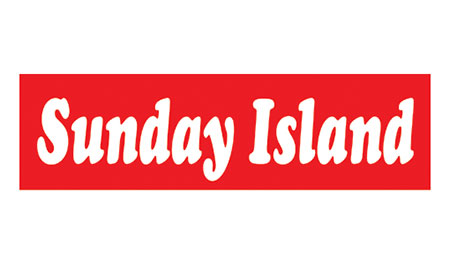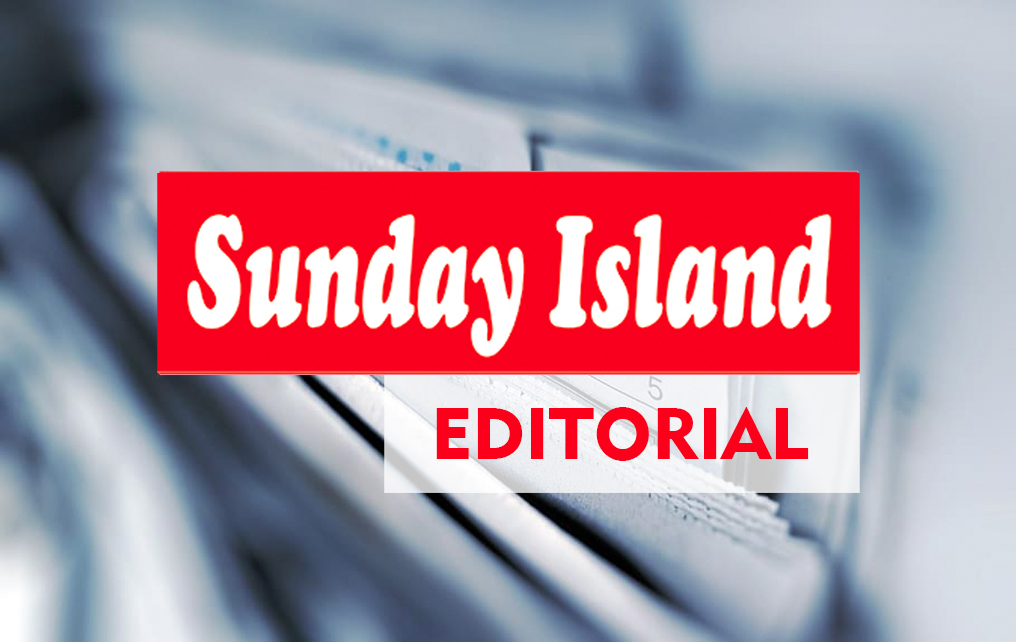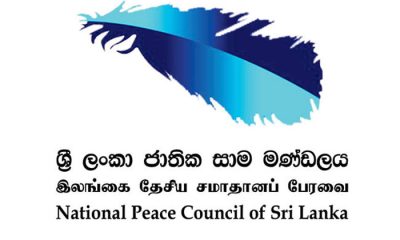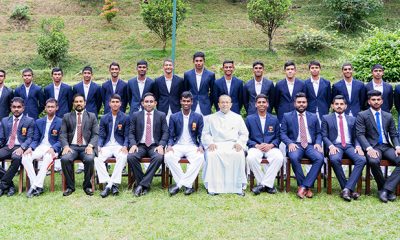Editorial
Ranil waiting for a nekatha?

A front page report in Thursday’s The Island read “NL slot: Ranil still dilly-dallying.” Dilly-dallying was the right word for describing what Wickremesinghe is doing about filling the single National List slot his party won following its zero seat debacle at the last parliamentary election. The report under reference quoted UNP Chairman Vajira Abeywardena saying that Wickremesinghe had not yet decided to occupy this still vacant seat to which his party must make a formal nomination. Several weeks earlier the UNP had decided that Wickremesinghe must take that place. According to Abeywardena, the party’s “leader for life,” as some deride him, would decide on returning to parliament (or not, we presume) in a month or two. But recent weeks have shown Ranil showing his face in the political scene, though from outside parliament, via media interviews and public appearances signaling that he’s not yet past tense.
Soon after his party’s rout last August, Wickremesinghe went on record saying he will not accept the National List position, but he showed no signs whatever of giving up the UNP leadership. President J.R. Jayewardene, Ranil’s kinsman and mentor, crafted the 1978 constitution to ensure via a proportional representation (PR) system for future elections that no major party can suffer a landslide defeat. The UNP had suffered one under the old Westminster-style order in 1956 when late Prime Minister SWRD Bandaranaike said that “the last nail had been driven into the UNP’s coffin.” The SLFP led by Bandaranaike’s widow suffered the same fate in 1977 when the once proud old left, comprising the Lanka Sama Samaja Party (LSSP) and Communist Party (CP), suffered the same zero debacle that was the UNP’s lot at the last election. Under the previous order there were no National List straws for drowning political parties to clutch.
JRJ proved Bandaranaike wrong at the Colombo Municipal Council election that the followed the 1956 “people’s revolution” when the UNP, which governed the country since Independence, was stunningly swept out of office. By March 1960, after Bandaranaike’s tragic assassination, the greens were back in national office, albeit briefly. But five years later, the party served a full term under Prime Minister Dudley Senanayake until a second debacle hit it in 1970. Such blows, no doubt, influenced Jayewardene to use the five sixth majority he won in 1977 under a constituency system to build constitutional safeguards against history repeating itself. But the best laid plans of mice and men can go awry as the contemporary political history of this country has amply demonstrated.
If Ranil Wickremesinghe did not wish to occupy the UNP’s only National List seat in Parliament when his party decided he should fill it, he should or could have said so. He did clearly say that he will not take that seat in the immediate aftermath of the last election resulting in other’s staking claims and John Amaratunga, a party heavyweight, believing he would be back in the legislature. Thereafter the weeks and months were allowed to roll by leaving the whole matter suspended in midair. Wickremesinghe, who has been prime minister of this country several times, has by his conduct both in and out of office shown that he is a believer in the beneficial effect of attending various poojas in South India and probably has astrological beliefs. As such, none can be blamed for wondering whether he is awaiting a propitious moment – a nekatha – to return to Parliament if such is his intention. Given his recent interviews, last week on the Colombo Port City which his coalition promised to scrap but only delayed at substantial cost to the nation, and his retention of the UNP’s leadership, he does not seem to want to cut and run or retire gracefully.
The western traditions towards which he had long tilted would have required him to quit after a debacle of the proportions of August 2020. This he did not do. As UNP leader, he thrice chose not to run for president, first conceding the opposition slot to Sarath Fonseka, then to Maithripala Sirisena and finally to Sajith Premadasa whom he wanted to field not as UNP leader but as deputy leader. Premadasa did not accept that, split the UNP taking most of its parliamentary group with him, leaving Ranil with a rump. Some analysts would say that the not running concessions were made in the belief that two of those candidate’s would not win. In Sirisena’s case, the common opposition candidature was structured in a manner that enabled Wickremesinghe to call the shots if victory was achieved.
But it must also be said in Wickremesinghe’s defence that he probably would have won the 2005 presidential election but for the LTTE’s intervention, closing exit points from territory the Tigers held to government-controlled areas where polling stations were located, preventing thousands of
Tamils from voting. It has been alleged that there was heavy rigging at the previous presidential race which Ranil narrowly lost. He’s among the most experienced among our politicians, thrice served as prime minister, had long stints as opposition leader and is widely acknowledged as man of ability. He is slightly older than President Gotabaya Rajapaksa (both were born in 1949) but younger than Mahinda. Wickremesinghe catapulted to the UNP leadership as a result of the assassinations of Gamini Dissanayake, Lalith Athulathmudali and Ranasinghe Premadasa.
JRJ once famously said that he had succeeded in climbing the greasy pole outliving his opponents. But none of them were assassinated. It’s difficult to figure out now what Wickremesinghe’s game plan is. He is keeping his cards close to his chest and fending off questions during occasional public appearances.
Editorial
Bottom trawling: Right and Might

Indian Prime Minister Narndra Modi’s three-day visit here was predictably heralded by a blaze of publicity in the local press and electronic media. This was no cause for surprise given that good relations with our giant neighbour, or Big Brother as some would prefer to style it, must remain the cornerstone of Sri Lanka’s foreign policy. New Delhi accurately judged in which direction the political winds were blowing well ahead of last year’s presidential and parliamentary elections and invited the soon to be President Anura Kumara Dissanayake to visit India where he was well received. Weeks after being elected president, and scoring a better than two thirds majority in the parliamentary election that followed shortly thereafter, Dissanayake paid a state visit to India, his very first after being elected and was very warmly welcomed.
Prime Minister Modi is now here on a reciprocal visit and has a crowded agenda including a visit to Anuradhapura where he will pay homage to the sacred Jaya Sri Maha Bodhiya, grown from a sapling of the bo tree in India under which the Buddha attained enlightenment; and formally inaugurate the Maho-Anuradhapura railway signaling system and the newly upgraded Maho-Omanthai railway line, both assisted by India. Several memorandums of understanding, including possibly a Defence Co-operation Agreement, kept under wraps at the time of writing this comment, are due to be exchanged. Official word on the subject is that matters to be covered in the MOUs include energy, digitization, security and healthcare along with agreements relating to India’s debt restructuring assistance. But no details have been forthcoming.
Additionally, the visiting prime minister and his delegation who will have bilateral discussions with Sri Lanka’s president is also due to virtually inaugurate several India assisted projects. These include the Sampur solar power plant, the 5,000 mt temperature and humidity controlled cold storage facility in Dambulla and the installation of 5,000 solar panels across 5,000 religious sites here. Sri Lanka cannot forget the massive assistance provided by India in 2022 when this country faced the worst economic crisis in its contemporary history. At that time India provided multi-pronged assistance, including a $4 billion financing package through multiple credit lines and currency support, to help this country sustain essential imports and avoid defaulting on its debts.
Sri Lanka is undoubtedly benefiting from great power rivalry between India and China in the Indian Ocean where India seeks advantages through its Neighbourhood First policy while China seeks leverage through its Belt and Road initiative. The fact that the new Sri Lanka president chose to make his first state visit to India and thereafter follow with a visit to China may be an indication of priorities in Colombo. There is no escaping the reality that all countries must, where foreign relations are concerned, place their own national interest above all other considerations. This is so be it for Sri Lanka, India, China or any other country. Thus while not looking gift horses in the mouth, we must always be conscious that there is no such thing as a free lunch and be protective of our own interests.
Relations between Sri Lanka and India saw both high and low points during this century. The low was during the civil war Sri Lanka waged against the Liberation Tigers of Tamil Eelam (LTTE) in the earlier stages of which India allowed the insurgents to train and base on Indian territory. India, in fact, provided them with weapons and military training and other assistance through its RAW (Research and Analysis Wing). state intelligence agency. It may be argued that the communal disharmony between the Sinhalese and the Tamils that escalated into civil war was a problem of Sri Lanka’s own making and sub-regional sentiment in Tamil Nadu greatly influenced New Delhi’s hand in intervening.
Relations thereby plummeted and were restored to a point by the signing the Indo- Sri Lanka Peace Accord between President J.R. Jayewardene and Prime Minister Rajiv Gandhi in July 1987. With two insurrections raging in the north and south of the country, Jayewardene had no option but seek Indian assistance on India’s terms. What followed including Rajiv Gandhi’s assassination, as he campaigned for re-election as India’s prime minister is contemporary history that requires no elaboration. But since then, in the post 2022 situation when Sri Lanka faced an unprecedented economic crisis and was forced to declare bankruptcy, India came to our rescue with massive assistance and relations between the two countries have never been better.
At this point of time when Sri Lanka is headed in a new political direction under new leadership, will it be possible for the greatest irritant in present Indo-Lanka relations – bottom trawling by Indian fishermen poaching in Sri Lanka waters and destroying the marine environment – to be conclusively resolved? India has always adopted the position that this issue must be resolved in what she calls a “humanitarian manner.” It is undoubtedly a livelihood issue for fishermen – on both sides. Indian fishermen enjoyed free rein on the Sri Lanka side of the International Maritime Boundary during the war when Lankan fishermen were prohibited from going into deep sea. The Indians claim fishing in our waters to be their “traditional right.”
Prime Minister Modi’s party attempted to win votes in Tamil Nadu during the last election by accusing the Congress of “ceding” Kachchativu to Sri Lanka. The right on this issue is on our side while the might is on India’s. In the midst of honeyed words that will be much of the picture during until Sunday when the visit ends, result in might conceding to right? Even at least as far as stopping bottom trawling, illegal on our side though not in India’s goes?
Editorial
Dulling the pangs of hunger

Saturday 5th April, 2025
The government has, with the help of the National Food Promotion Board, the Ministry of Health and the Ministry of Agriculture, launched a programme to provide the public with nutritious food at reasonable prices as part of its Clean Sri Lanka initiative. The public, fleeced by private eatery owners ruthlessly, will surely benefit from this programme, which deserves praise. It will also help improve the government’s approval rating significantly. A way to a person’s heart is said to be through his or her stomach.
A widely-held misconception is that every prospect pleases in this country, and only politicians are vile. True, most politicians are thought to be bad, but it is not fair to single them out for castigation. There are many others who are either equally bad or even worse. The blame for people’s hardships due to the high cost of living should be apportioned to the business community, given to unconscionably exploitative practices; its members, from wayside eatery owners to corporate fat cats, jack up the prices of their products and services according to their whims and fancies, at the expense of the public. The rice millers have become a law unto themselves.
Why food inflation is high is not difficult to understand. A plain hopper is priced at Rs. 25, and an egg costs about Rs. 30 at present, but an egg hopper is sold at Rs. 100! Food prices that went into the stratosphere at the height of the economic crisis in 2022 have not come down significantly owing to the greed of the unscrupulous members of the business community.
The government initiative to make quality food available at reasonable prices to the public should continue, and it is hoped that the NPP leaders will also develop the Hela Bojun Hala (HBH) restaurant chain under the Ministry of Agriculture. These eating places not only sell nutritious food made from local ingredients at very reasonable prices but also economically empower women. All HBH outlets are run by women and do not sell wheat flour products or sugary drinks.
The NPP government can give a turbo boost to the HBH programme by expanding it across the country. That will help provide direct employment to many more women. Sri Lanka’s overall unemployment rate is 4.7%, and about 6.7% women are unemployed. Besides, during gluts, fruit and vegetable growers often dump their unsold produce on the roadside in protest. The government may be able to use the HBH network to help the farming community while generating employment opportunities and providing the public with quality food at affordable prices.
Minister of Agriculture K. D. Lalkantha, known for innovative thinking and hard work, was the chief guest at the recent launch of the aforesaid food programme. He should take time off from pursuits such as counting monkeys and give serious thought to developing the HBH network further so that more people will have access to reasonably-priced, hygienic, and nutritious foods, and more jobs can be created for women, and men as well if a home delivery service is set up at the HBH outlets.
Sri Lanka’s political culture is such that when a new government is elected it launches its own programmes and either scrap the ones introduced by its predecessor or let them wither on the vine. It is hoped that the NPP government will be different and develop the HBH programme, which has become a success.
Editorial
Trump’s pound of flesh and bleeding nations

Friday 4th April, 2025
US President Donald Trump has jacked up tariffs on imports in the name of making America wealthy again. Yesterday, he signed an executive order, with his usual melodrama, increasing tariffs on goods imported from many countries including Sri Lanka, which will now have to pay as much as 44% by way of tariff on its exports to the US. Claiming that the unprecedented tariff hike is a reciprocal measure, Trump has said the new 44% tariff is in response to Sri Lanka’s 88% trade barriers on American goods. It is a case of a giant competing with a dwarf!
Powerful nations are resilient enough to absorb the US tariff shocks, but the weaker economies like Sri Lanka are bound to reel and even go into a tailspin, causing further destabilisation of the developing world. The US tariff hike will deal a body blow to Sri Lanka’s export sector, especially its garment industry, which is showing signs of recovery. Sri Lankan goods, especially garments, will now be less competitive in the US market. Other Asian garment exporters, such as India, Bangladesh and Vietnam, also have higher US tariffs to contend with but not to the same extent as Sri Lanka. There’s the rub.
A drastic decline in export earnings due to the new US tariffs will invariably lead to a decrease in Sri Lanka’s foreign currency reserves, causing a further depreciation of the rupee, an increase in inflation, job losses, and even socio-political upheavals unless the US takes the fragile condition of the Sri Lankan economy and softens its stand.
President Anura Kumara Dissanayake has appointed an expert committee to study the economic fallout of the US tariff hike and recommend remedial measures. This is a step in the right direction, and it is hoped that the government, together with all other stakeholders, will be able to formulate a mitigatory strategy to cushion the impact of the new US tariffs on the local industries and the ailing economy. Most of all, the government will have to manage the country’s foreign currency reserves frugally.
What the US can gain from the unprecedented hike in tariffs on Sri Lankan exports is negligible, and it will not give any significant boost to the US economy or industries. Is Washington trying to leverage Sri Lanka’s overdependence on the US as an export destination to further its geopolitical interests in a bigger way? Is the Trump administration goading Sri Lanka into a situation where the latter will be left with no alternative but to agree to anything including controversial agreements, owing to its sheer desperation to have the US tariffs on its exports reduced?
If what Trump said, while announcing the new tariffs is anything to go by, he wants to make America wealthy again by creating conditions for the domestic industries to be ‘reborn’. But he has apparently ignored factors like stringent environmental laws, higher cost of domestic labour, increases in raw material costs due to new tariffs, technological competition, etc., which will stand in the way of the US in achieving his dream.
Whether Trump will be able to realise his MAGA (Make America Great Again) goal by resorting to ruthless actions that weaken the economies in the developing world may be in doubt, but one possible outcome of his tariff war, as it were, is not difficult to predict. Extremely high tariffs the US has imposed on imports are at variance with the liberal economic principles and policies it has long championed. Such excessively protectionist measures could undermine America’s global dominance, driving smaller nations to gravitate towards its rivals in search of favourable trade terms. Russia lost no time in offering to help Sri Lanka’s export sector. Other powerful nations are likely to follow suit where the developing countries troubled by the US tariffs are concerned.
-

 Business2 days ago
Business2 days agoStrengthening SDG integration into provincial planning and development process
-

 News6 days ago
News6 days agoBid to include genocide allegation against Sri Lanka in Canada’s school curriculum thwarted
-

 Business1 day ago
Business1 day agoNew SL Sovereign Bonds win foreign investor confidence
-

 Sports3 days ago
Sports3 days agoTo play or not to play is Richmond’s decision
-

 Business1 day ago
Business1 day agoDaraz Sri Lanka ushers in the New Year with 4.4 Avurudu Wasi Pro Max – Sri Lanka’s biggest online Avurudu sale
-

 Latest News5 days ago
Latest News5 days agoIPL 2025: Rookies Ashwani and Rickelton lead Mumbai Indians to first win
-

 News6 days ago
News6 days agoSL needs a comprehensive solution, not selective justice: NPC
-

 Sports4 days ago
Sports4 days agoTrinity, St. Anthony’s out to end decade long victory drought











